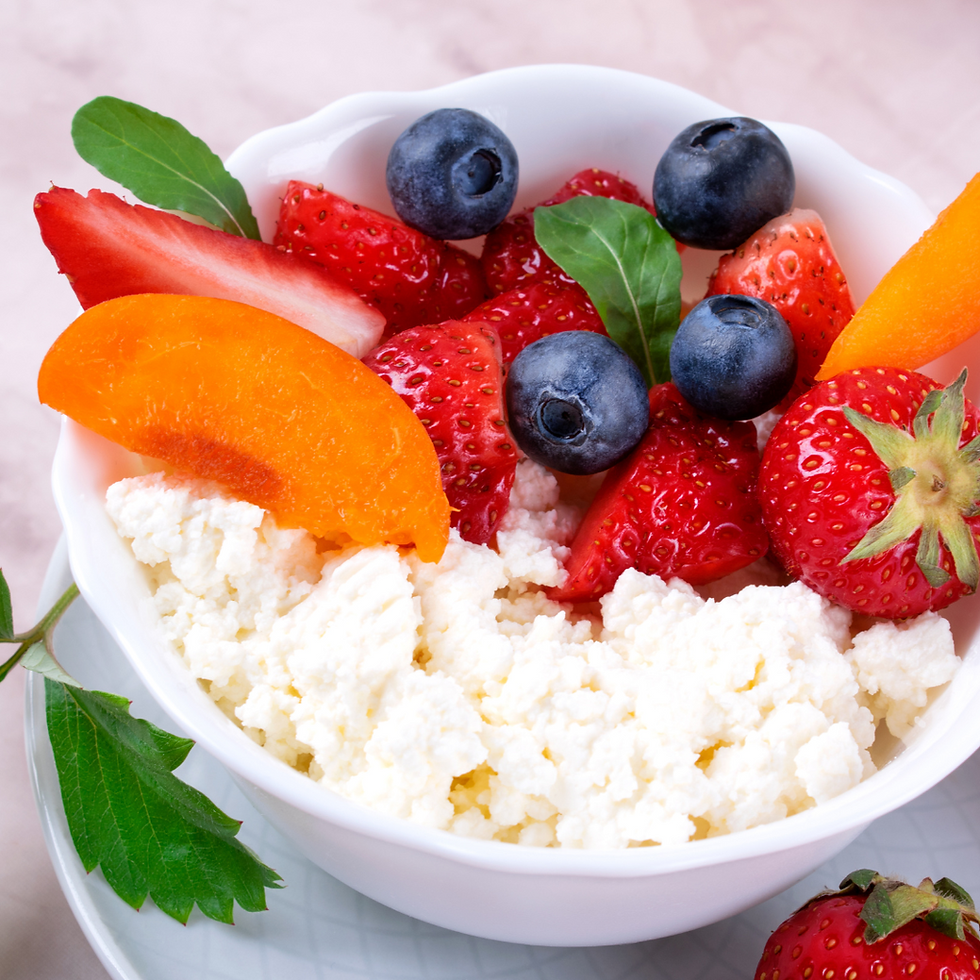Cottage cheese: Six truths that might just surprise you
- Asja Harris

- Mar 13
- 3 min read

There are two powerfully polarizing foods in this world. One is cilantro—you either love its bold, fresh, slightly citrusy flavour or you think it tastes like soap. The other is cottage cheese. But here it’s the consistency, not the flavour, that repels some people.
While it’s true that cottage cheese has a lumpy, strange texture, it doesn’t have to stay that way. It can be blended until smooth, incorporated into recipes where the texture is irrelevant, or melted into a gooey sauce. Use it to make breakfast cheesecake or parfait, mix it into mac n cheese, add it to eggs, or boost the protein in your pancakes—the options are endless!
In addition to its versatility, here are six other things you might not know about cottage cheese. Five of them might just convince you that cottage cheese is the dietary addition you didn’t know you needed, and the sixth might surprise you.
1. Excellent source of protein
Cottage cheese is packed with protein, with a half cup serving containing about 14 grams. Like yogurt, it’s mostly comprised of casein protein, which takes longer to digest than the whey protein you might add to a shake or smoothie. Because of its slow digesting properties, cottage cheese is a great option when you want to feel full for hours.
To ensure you meet your protein needs for the day so that you support your muscles, various metabolic functions, and your immune system, I recommend adding protein to every meal AND snack. A palm-equivalent portion is a great way to estimate the size of a serving. If you’re struggling to find protein to have with your snacks, a serving of cottage cheese is a great place to start.
2. Good for your bones
Cottage cheese won’t just support your muscle strength, it’ll also support strong bones and may help prevent osteoporosis. That’s because it’s also rich in calcium, phosphorus, and magnesium. Some brands even fortify their cottage cheese with extra calcium to make sure consumers are getting enough of this important nutrient.
3. Contains important B vitamins
Cottage cheese is also vitamin rich. It contains B12, riboflavin (B2), and pantothenic acid (B5), which play a vital role in energy production, brain function, and red blood cell formation.
4. Goes well with both sweet and savory dishes
Besides the nutrient rich properties of cottage cheese, it’s a great addition to your diet because it’s extremely versatile. It pairs well with fruit and berries, as well as things like cucumbers, tomatoes, and a sprinkle of spices.
5. Can be swapped for higher fat ingredients
Given its versatility, cottage cheese is also an excellent stand-in for other ingredients. It can replace heavy cream, ricotta, or even cream cheese in recipes like dips, pasta sauces, or cheesecakes. This swap can help make your recipes higher in protein but lower in fat. I’ll let you in on a little secret (don’t tell my son)—I’ve even blended it super smooth and added it to icing in place of butter!
6. High in sodium
One potential drawback to cottage cheese that you might not know about is that it’s typically high in sodium. Standard brands usually contain about 300mg or around 13% of your daily intake per serving size, which is just a half cup. It might surprise you, but the upper limit of the recommended daily intake for sodium stands at 2300mg.
If you have a one cup serving, this will account for roughly 25% of that number. If limiting your sodium is a concern because of high blood pressure or other medical conditions, opt for “No Salt Added” varieties that contain much less sodium. These have around 65mg or just 3% of your daily intake. While the taste is milder, you won’t notice if you’re combining it with other foods or using it in your baking.
The bottom line
Cottage cheese is an incredibly versatile food that packs protein and other nutrients essential for your health. While its texture might have been a dealbreaker for you in the past, know that there are plenty of ways you can incorporate it into your diet where texture won’t be a drawback at all. Need some recipe inspiration? Look no further!




Comments